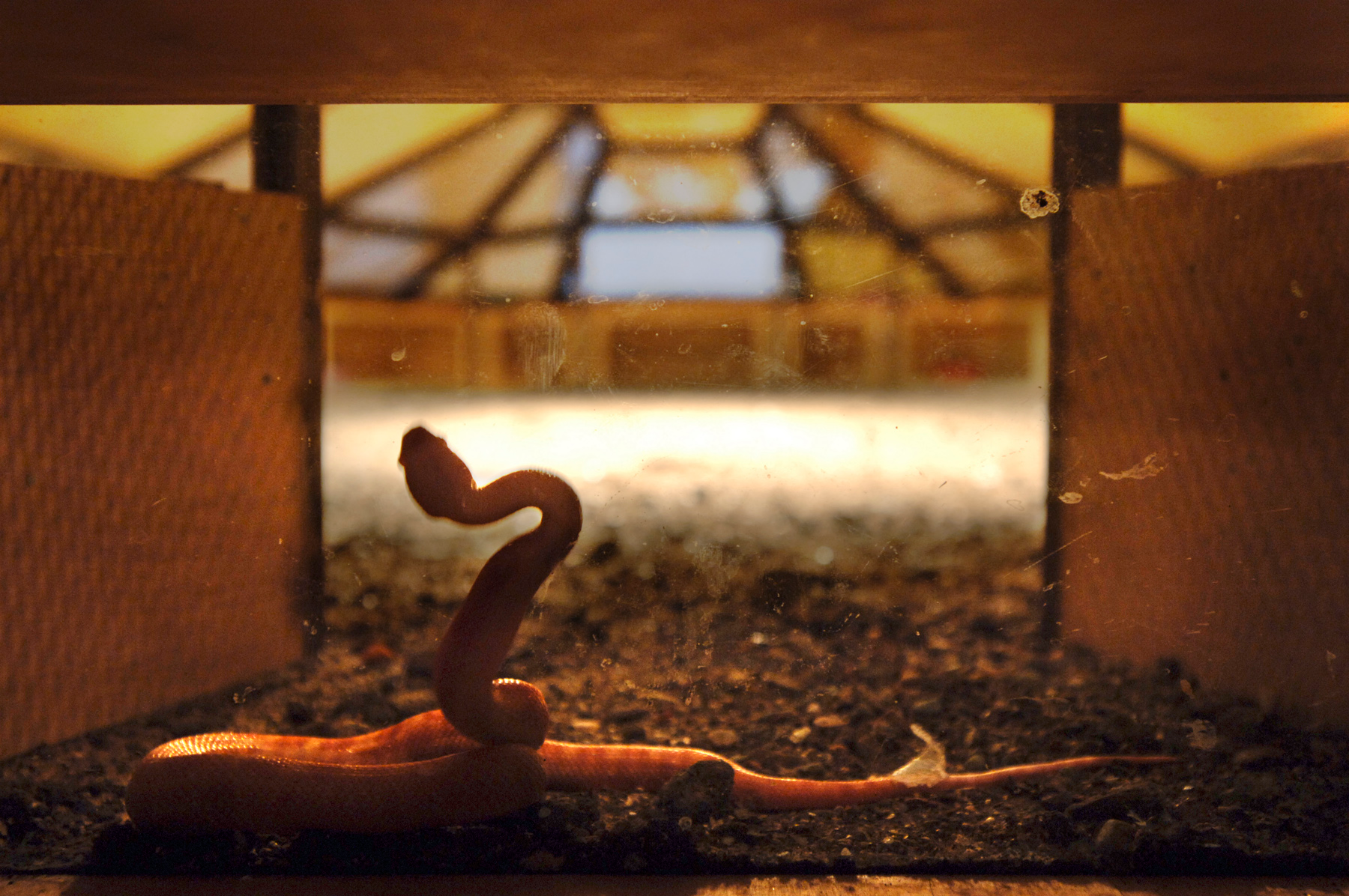Brian Gillis’ art work was thought provoking and enlightening. I was very interested in his discussion of printing as a revolutionary technology, and the new applications of printing to creating three dimensional items. His work focuses on resistance to oppression and bigotry as well. Mr. Novak’s work also offered a critique of the violence of modern life. I chose the work of Huang Yong Ping that is an equally biting indictment.
Afterwards, I did some independent investigation online about printing. I corresponded with people who do letterpress printing as an art form, a craft, and a hobby. Mr. Gillis rightly asks us not to take printing for granted. It can actually be a painstaking handwork process, with a sensual and intimate connection to the block or frame containing the plate, the paper, the ink, the machine, and the drying process.
On the other hand, printing can be an entirely digital, high-tech process, even creating the sort of three dimensional objects to which Mr. Gillis referred, and creating the microchips in this very computer. Even the design of typeface is a whole art form in itself, as evidenced by the fact that a typeface received a place of honor at a museum.
I discovered from studying the history of printing that it was far more than a convenience. Printing apparently helped ignite the Protestant Reformation. It speeded the birth of the Industrial Revolution. It even made possible the development of our modern democracies. Printing, by placing books in the hands of more than just the wealthy, permitted all economic classes to access more or less the same information about their religion, science, and their human rights.
Mr. Gillis’ personal interest in printing fits perfectly with his focus on breaking the rules and pushing beyond limitations, including bigotry and stereotyping. His work, repeatedly speaks to the ways that people push back against oppression, for example in his piece entitled Disobedience, Abstraction, and the Opposable Thumb: Tank Man (2010) In this piece, he memorializes the solitary man who confronted the tanks in Tiananmen Square in 1989.
His use of wood seems to me to be a reference to human fragility. The neutral color makes me think of this being applicable to all of us, no matter where, or when, in the world or in time. By pairing the notion of disobedience with the opposable thumb, he suggests that to be human is to disobey. He also leads us to ponder that to be human is to invent and abstract from the world both ideas and art that are not available to other creatures.
His interest in printing and significance of ‘the word’ is reflected in his piece titled A Mystery, the Book, and the Chicken or the Egg (2007). In this work, he collects the key elements of Judeo-Christian religious tradition in drawers, tucked away, suggesting that there is perhaps nothing in the blank book. This connects with the role of printing in allowing people who could never have afforded to own a Bible to finally read it and interpret it personally.
Mr. Novak’s work also addresses deep issues, such as our self destructive tendencies. His fully armed 21st Century Bunny (2006), comments on how we must be constantly aware of the potential for violence these days, often random, whether from terrorists or drugged criminals.
His exquisite and wounded Disfigurines , as detailed and perfectly lifelike as Renaissance ceramics by Della Robia, criticize us for allowing the world to become so violent to one another that we damage each other’s beauty. Icarus Junior (2008) seems to critique our distressing tendency to ecological degradation.
The little figure, the offspring of the ancient Greek mythological teenager with attitude is described as caring nothing for the pursuit of knowledge, but only for speed and height. Each of these works is exquisitely crafted, often with vintage industrial processes such as commercial porcelain manufacturing techniques. These are particularly displayed in his sink/confessional titled Kohler Sink (2004).
Tomme
To pair with these two, I picked a Chinese artist named Huang Yong Ping. He makes subtle criticisms of humanity’s foibles. His work, Theatre of the World, houses a group of disparate, small, live animals together in a tiny, but beautifully constructed coliseum. They came from most terrestrial phyla, including ,mammal, reptile (pictured in the link), and insect.
Each animal had their own space and was fed generously with customized foods. In spite of this, they eventually ate each other. It is difficult to imagine a more vivid allegory of senseless human violence. His other works combine magnificent craftsmanship with social commentary as well, just as our guest artists do.

Works Cited
Gillis, Brian. “A Mystery, the Book, and the Chicken or the Egg.” 2007. Web.
—. “Disobedience, Abstraction, and the Opposable Thumb: Tank Man.” 2010. gillislab. Web.
Novak, Justin. “21st Century Bunny.” 2006. blogs eciad. Web.
—. “Disfigurines.” 1997 to 2006. blogs eciad. Web.
—. “Icarus Junior.” 2008. blogs eciad. Web.
—. “Kohler Sink.” 2004. blogs eciad. Web.
Ping, Huang Yong. “Theatre of the World.” 2008. MassMOCA. Web.